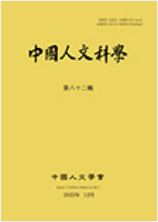본 연구는 그동안 금문도를 둘러싼 거시적 시각과 담론에서 벗어나, 오균요의 산문집 『금문』에 파편화되어 나타나는 작가의 기억 속 금문도와 그 시공간 속을 사는 사람들의 모습을 분석하였다. 그리고 이를 통해 작가와 금문도 주민들이 금문도에 대해 스스로 어떠한 의미를 부여하고 있으며 금문도를 어떻게 의미화하는가를 탐색함으로써, 금문도에 대한 다양한 이해의 모색을 시도한다. 오균요의 『금문』에 파편화되어 나타나는 금문도의 형상은 크게 세 가지로 나눌 수 있다. 첫째, 작가는 포격과 총소리를 비롯해 통행금지, 등화관제와 같은 군사적 통제를 일상적으로 받아들이는 금문 주민들의 모습과 군사시설을 놀이터 삼아 뛰어노는 아이들의 모습을 묘사함으로써, ‘전쟁과 일상의 공간으로서 금문도’를 형상화한다. 둘째, 작가는 작품 곳곳에서 금문도 사람들의 가난과 무지, 생존에 대한 불안, 끊어진 세대로서의 설움을 고백하듯 서술한다. 그리고 이를 통해 ‘열등감과 콤플렉스의 공간으로서 금문도’의 형상을 만들어낸다. 셋째, 오균요는 금문도라는 공간에서 동시대를 살았던 여러 군인의 삶과 죽음을 재현함으로써, ‘이향과 죽음의 공간으로서 금문도’를 그려낸다.
This study analyzed the appearance of people living in Kinmen Island and its times and places in the artist's memory, which was fragmented in Wu Jun-yao's prose collection “Kinmen.” And through this, by exploring how the author signs Kinmen Island, he attempts to find various understandings of Kinmen Island. The shape of Geummundo Island, which appears fragmented in Wu Jun-yao's Kinmen, can be divided into three main categories. First, the artist embodies 'Kinmen Island as a space for war and daily life’ by describing the daily acceptance of military controls such as curfew and blackout as well as the appearance of Kinmen residents running around using military facilities as a playground. Second, the artist confesses to the poverty and ignorance of the people of Kinmen Island, anxiety about survival, and sorrow as a broken generation throughout the work. And through this, it creates the shape of 'Kinmen Island as a space for inferiority complex'. Third, Wu Jun-yao depicts 'Kinmen Island as a space of other and death' by recreating the lives and deaths of several soldiers who lived in the contemporary era in a space called Kinmen Island.
Ⅰ. 오균요와 금문도
Ⅱ. 전쟁과 일상의 공간으로서 금문도
Ⅲ. 열등감과 콤플렉스의 공간으로서 금문도
Ⅳ. 이향과 죽음의 공간으로서 금문도
Ⅳ. 나가며
參考文獻
(0)
(0)
